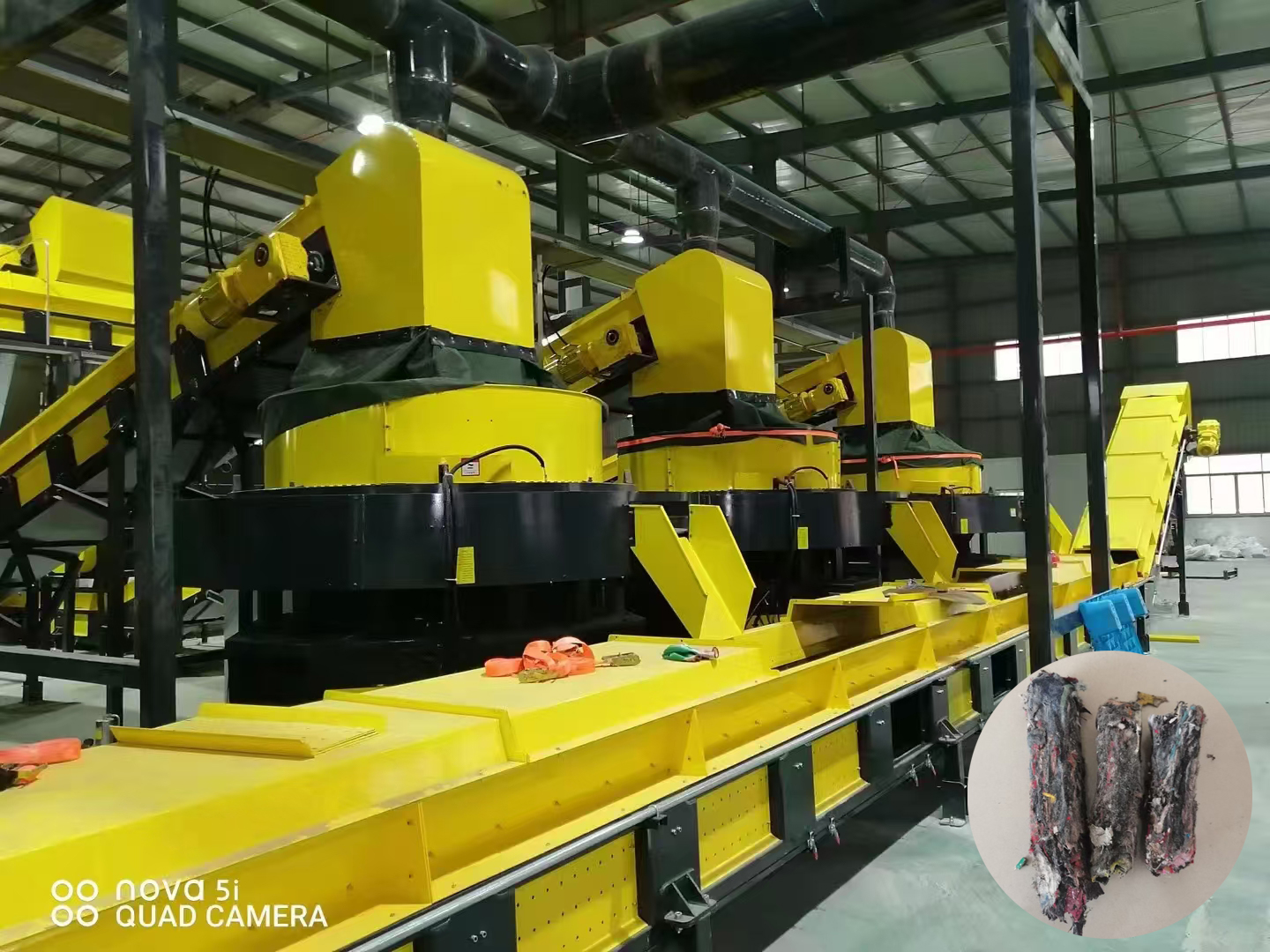Technology of making RDF fuel rods from industrial wastes
Refuse Derived Fuel (RDF) is a derived fuel derived from combustible waste. Here is some basic information about RDF fuel rods:

1.)Definition
1.RDF refers to refuse derived fuel, which is a solid fuel made from domestic waste or other types of waste through a series of treatment processes.
2.RDF in the form of fuel rods usually refers to long strips of fuel formed by compression molding process.
2.)Production technology
1.Crushing: First of all, the collected domestic waste is broken to make it meet certain particle size requirements.
2.Separation: removal of non-combustible components (such as metal, glass, etc.) and harmful substances by physical or chemical methods.
3.Drying: Remove moisture from the material and increase the calorific value.
4.Mixing: Adjust the ratio of different components as needed to obtain the ideal combustion performance.
5.Molding: Compress the processed material into a rod or other shape for easy storage and transportation.
6.Additives: In some cases, some chemicals, such as calcifying compounds, are added to improve the performance of the fuel, such as increasing corrosion resistance and reducing dioxin emissions.
3.)Peculiarity
1.High calorific value: RDF fuel rods have a higher calorific value than raw waste.
2.Combustion stability: The combustion process is more stable, helping to improve combustion efficiency.
3.Easy storage and transport: The formed RDF fuel rods are easy to stack and transport.
4.Low emissions: Compared with traditional fossil fuels, RDF fuel rods produce less harmful gases during combustion, especially dioxins.
5.Environmentally friendly: The use of RDF fuel rods helps reduce the need for landfill and incineration, thereby reducing pressure on the environment.
4.)Application field
1.Power generation: RDF fuel rods can be used as fuel for thermal power plants, replacing some coal.
2.Industrial boilers: Provide the heat energy needed in industrial production.
3.Cement manufacturing: Used as an auxiliary fuel in the cement production process.
4.Heating engineering: for central heating systems.
5.)Market prospect
1.With the increasing awareness of environmental protection and the advancement of technology, the market demand for RDF fuel rods as a clean energy source is growing.
2.Many countries and regions are actively promoting and developing the production and application of RDF fuel rods to reduce the dependence on fossil fuels and solve the problem of waste disposal.
Overall, RDF fuel rods are a sustainable solution that can effectively use waste resources and reduce environmental pollution.
-
 Trommel screenTrommel screen, also known as drum screens, are widely used in various industries for sorting and separating materials.Get Quote
Trommel screenTrommel screen, also known as drum screens, are widely used in various industries for sorting and separating materials.Get Quote -
 Crop straw double shaft shreddApplications:Biomass Energy Production: Shredded straw can be used as a feedstock for bioenergy plants to produce electricity or heat.Livestock Feed: Reduced-si...Get Quote
Crop straw double shaft shreddApplications:Biomass Energy Production: Shredded straw can be used as a feedstock for bioenergy plants to produce electricity or heat.Livestock Feed: Reduced-si...Get Quote -
 Zhongcheng Air Drum SeparatorAir drum separators effectively separate lightweight materials (e.g., plastics, paper) from heavier materials (e.g., metals, glass). This high efficiency is cru...Get Quote
Zhongcheng Air Drum SeparatorAir drum separators effectively separate lightweight materials (e.g., plastics, paper) from heavier materials (e.g., metals, glass). This high efficiency is cru...Get Quote
-
2024-08-07Efficient Material Separation with Bounce ScreensThe ballistic separator is an important equipment with separation function designed for the sorting of inorganic particles in the coarsely crushed waste.
-
2023-01-12WindshifterWindshifter (Air Drum Separator ) is the ideal solution for separating all kind of waste types into two fractions, heavy and light. The robust construction and ...
-
2024-08-05Hot-sell Coconut Shredderworking principleCoconut shell shredder usually uses the force generated by cone and spiral to evenly squeeze the coconut meat in the grinding chamber between t...
-
2023-01-12Waste Baler For MSWHigh density solid waste balers are the final step before sending waste to landfill. Horizontal balers designed and manufactured for this difficult job and prov...
-
2024-04-13Vibrating FeederA vibrating feeder is a mechanical device used to convey materials, typically in bulk, from one location to another in a controlled manner. This equipment is co...



